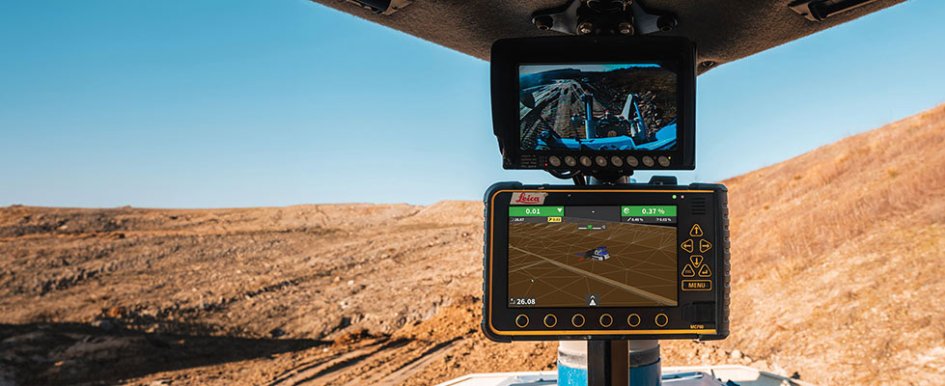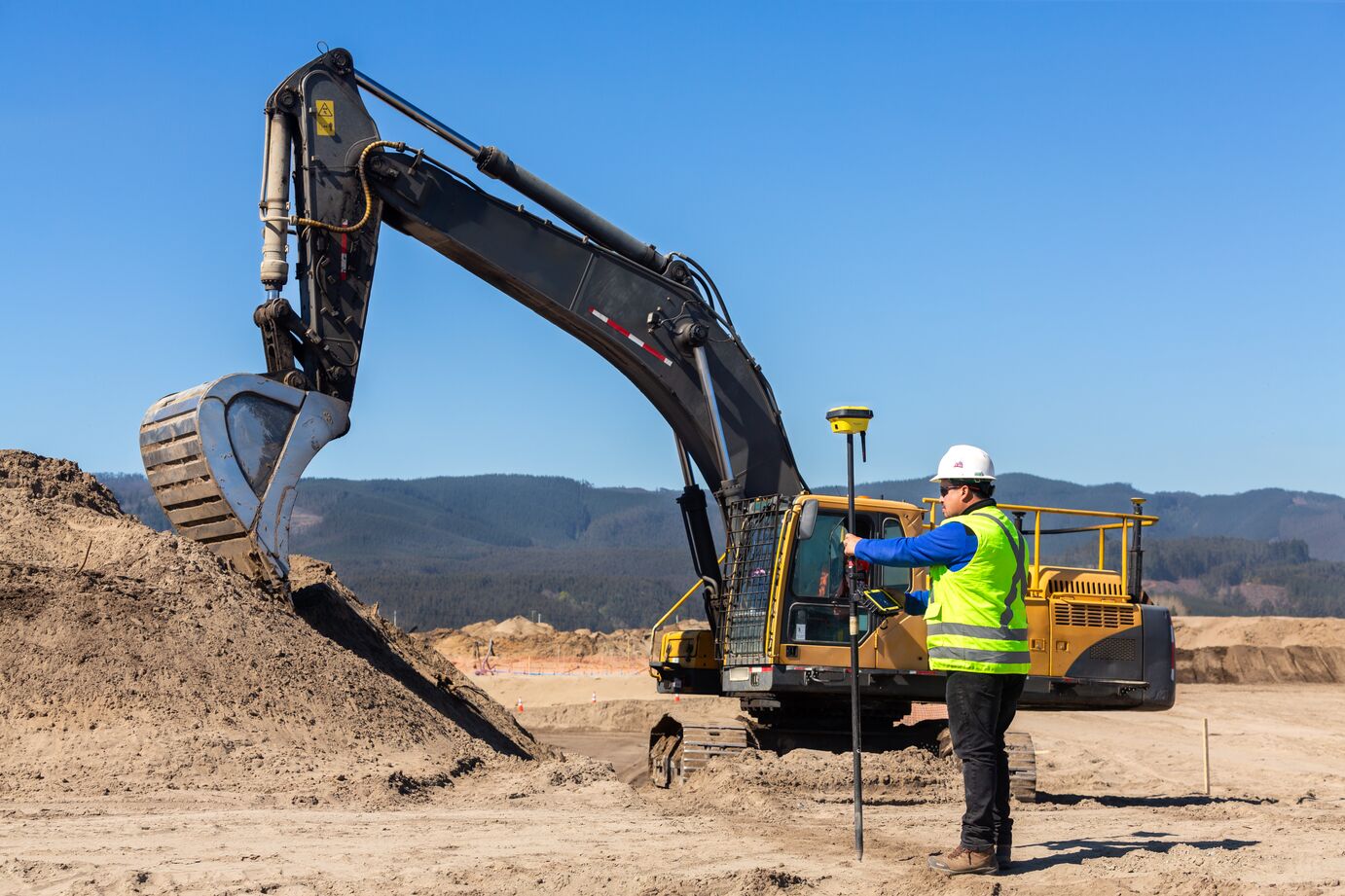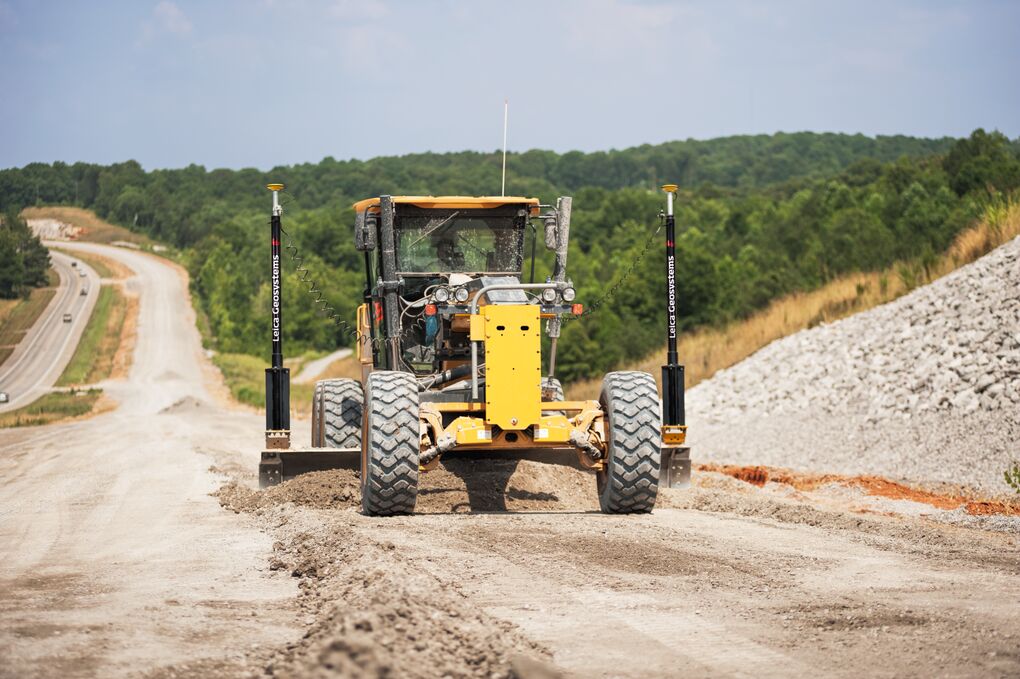
A project is only as good as its foundation.
The first step of a project isn’t turning dirt; it’s preparation. While often hidden, site preparation work, including the grade, is perhaps the most important work on any jobsite.
The technology driving the jobsite revolution is helping companies tackle long-standing problems and ensuring that every aspect of the job, even those hidden from everyday view, is done correctly.
As any business owner can attest, the efforts before and during site preparation are critical to a project’s ultimate success. Every step that follows in a project is built on this literal and figurative foundation, and missteps at the early stages can spell problems later, prompting project slowdowns and the need for expensive rework.
Preparing a site involves several steps, and two of the most important steps for achieving a perfect grade are determining the precise location and depth of the dig and identifying any potential obstructions. The adage “measure twice, cut once” can also be applied to grading a site for a project.

Let Technology Tackle the Task
For years, workers grading a site relied on their intuition. Many long-time equipment operators would say they graded based on “feel,” and they knew when the grade was correct.
Guessing isn’t a strategy for the modern jobsite, and with today’s technology, nothing should be left to chance. Operators no longer need to rely on their intuition to determine if they have properly graded a site.
Using technology such as machine control ensures the job is done right the first time. Machine control, which is becoming increasingly common on jobsites of all sizes, can eliminate some of the operator’s manual tasks while achieving the desired accuracy even more easily.
Companies that deploy machine control quickly discover how much it can enhance and streamline their operations and eliminate the possibility of human error.
At its most basic, machine control calculates the position of machinery using sensors, computers and communication networks to enable the automated operation of grading equipment, eliminating the need for placing grade stakes, which can be a potentially time-consuming prospect.
The machine control solution gives operators greater detail than traditional 2D paper plans, offering peace of mind in knowing they have completed the job as designed. The best part is that it integrates with most modern equipment on the jobsite, so construction business owners generally don’t need to invest in new fleets.
The process starts when the global navigation satellite system (GNSS) transmits signals with positioning data to a GNSS base station, or, increasingly, a real-time kinematic (RTK) correction network on the ground. The base station or RTK network then corrects the data.
It sends the data to GNSS/GPS receivers on the heavy equipment, such as the bucket on the excavator, dozer or grader blade, which guides the machine following a preprogrammed 3D model. The machine control technology automatically calculates the position of the equipment, adjusting it up to 20 times per second as needed.
Once an operator puts the machine into automatic mode, the machine performs the work without further intervention, ensuring that it excavates exactly according to plan.

The Next Generation of Workers Will Help Ensure the
Perfect Grade
One of the most significant issues facing the construction industry is the prolonged shortage of talented and trained labor. It has become increasingly challenging to find operators who have deep experience operating machines.
While a younger workforce is interested in and wants to enter the construction industry, they often lack the knowledge to perform tasks such as site grading. Construction technology — and machine control in particular — is the great equalizer, helping teams maintain their efficiency and productivity.
These solutions allow companies to do more with less, mitigating the labor shortage. While experienced heavy equipment operators are in short supply, advanced machine technology enables business owners to maintain productivity levels even with less experienced operators.
It is also inherently user-friendly, making it easier for companies to train new workers to use it — especially younger workers who have grown up with technology their entire lives. Companies using the latest solutions will enjoy the added benefit of more easily attracting new and younger talent, as cutting-edge equipment, such as laser scanners, total stations, GPS or machine control, will capture the interest of younger employees, not just the real-time conditions of the jobsite.
As the workforce evolves, technology like machine control enables owners to widen their potential talent pool, take on more work and grow their business. Contractors can complete a grade in fewer passes, increasing productivity while improving yields and safety.
The Right Tools Deliver the Right Work
Another adage, “a craftsman is only as good as their tools,” is equally relevant.
Using the right tools helps deliver quality work, ensuring that projects are completed as envisioned. It also ensures that teams have all the necessary information to make informed decisions in real-time.
Every jobsite function is interrelated, and technology can help companies coordinate the many roles and processes, saving time and money while reducing their team’s stress. With the right tools and platforms, operators can feel confident that they are performing their jobs correctly the first time.
Technology helps everyone involved in the project. It’s easier for the teams using it, reduces the stress of the job and delivers a better-quality project to the customer.
.jpg)
Technology Is the Solution to the Shortage
Amid an ongoing skilled labor shortage, technology empowers teams to consistently complete tasks with fewer people and without sacrificing quality. It also ensures that projects are completed correctly without the need for time-consuming and expensive rework.
The true return on an investment in technology is measured by the time and the mistakes it saves.
Rework is often the result of poor data and missed communication. Sharing up-to-date data via cloud connectivity enables the equipment operator to view all design information on the panel in the cab while working.
For too long, some companies have been slow to adopt new solutions for various reasons, including technological skepticism, workforce adaptation and concerns that technology will replace their jobs. There is no good reason for continued skepticism about whether technology is viable on the jobsite.
Technology is here, and its usage is increasing by the day. Moving forward, automation of jobsite tools can also play a role in increasing productivity.
Rather than ignoring it, construction business owners should look at jobsite technology from a different perspective. Instead of eliminating jobs, it will allow companies to do more. Because technology is an equalizer, small companies can compete with larger ones that have long held a competitive edge.
When a tool can safeguard a company’s time, talent and treasure — and improve its bottom line — where is the downside?
